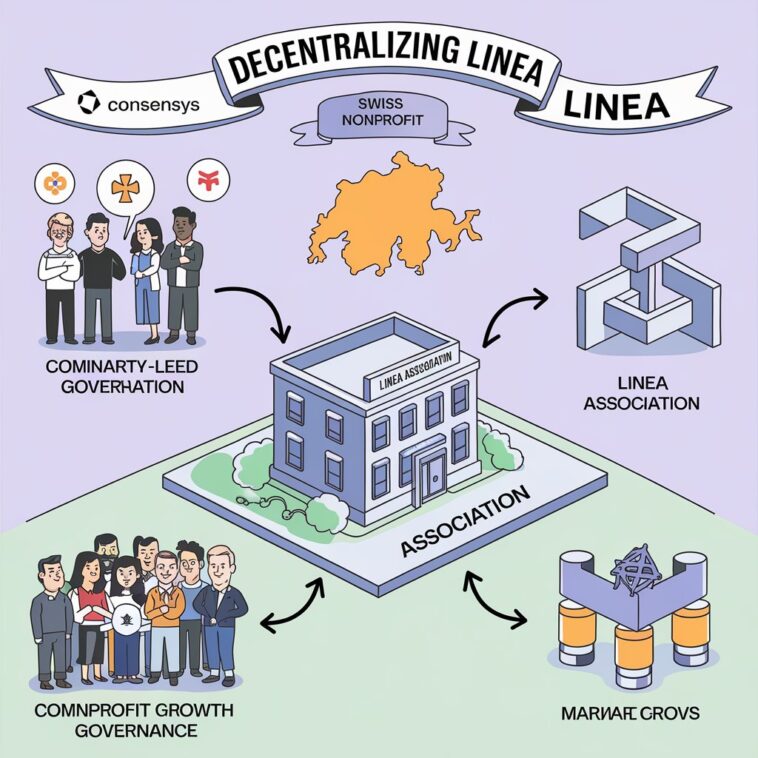ConsenSys is moving to make Linea—a layer-2 Ethereum network—more decentralized. They’ve created the Linea Association, a Swiss nonprofit, to take the reins on developing and managing Linea’s technology and governance. This was announced on November 13 at Devcon in Bangkok.
What’s the Linea Association’s Role?
The Linea Association’s main job is to guide Linea’s growth and help it shift away from centralized control. According to Linea product lead Declan Fox, this association will focus on three things: supporting Linea’s technology, building up its market, and advancing its path toward full decentralization. Joseph Lubin, founder of ConsenSys, emphasized that the association is key to making Linea a truly decentralized platform.
Community-Led Governance and the Linea Token
As part of this decentralization effort, the Linea Association will launch a governance token in early 2025. With this token, the Linea community can actively participate in important decisions, including managing Linea’s resources and intellectual property. The team plans to build this governance model with full transparency, ensuring the community plays a central role in guiding Linea’s future.
Why Decentralization is Important for Linea
Launched by ConsenSys in 2023, Linea’s mission has always focused on being open and community-owned, much like Ethereum itself. Nicolas Liochon, Linea’s founder, sees the Linea Association as a way to unite the Ethereum community under one goal: expanding what people can do on blockchain.
Tackling Common Layer-2 Challenges
Lubin mentioned that layer-2 networks often face issues with centralized control. By creating the Linea Association, ConsenSys aims to set a new standard, where decisions aren’t controlled by just one company or a small group but instead involve a broader community of stakeholders.
*Layer-2 (L2): An additional layer on top of a blockchain to make transactions faster and cheaper.




